The AMD Radeon RX 9070 enters the graphics card market at an interesting juncture. Hot on the heels of Nvidia's latest generation, this $549 card directly challenges the underwhelming GeForce RTX 5070. AMD easily wins this comparison, making the RX 9070 a compelling choice for 1440p gaming—or so it seems.
However, AMD's own pricing strategy complicates matters. The RX 9070 is only $50 cheaper than the superior RX 9070 XT. While the 8% performance difference roughly correlates with the price reduction, the extra $50 for significantly better performance is hard to ignore. Despite this, the choice between these two AMD cards remains a positive one for Team Red.
Purchasing Guide
The AMD Radeon RX 9070 launches March 6th, starting at $549. Expect variations in pricing from different manufacturers. Prioritize models closest to this starting price, given its proximity to the RX 9070 XT's price point.
AMD Radeon RX 9070 – Photos
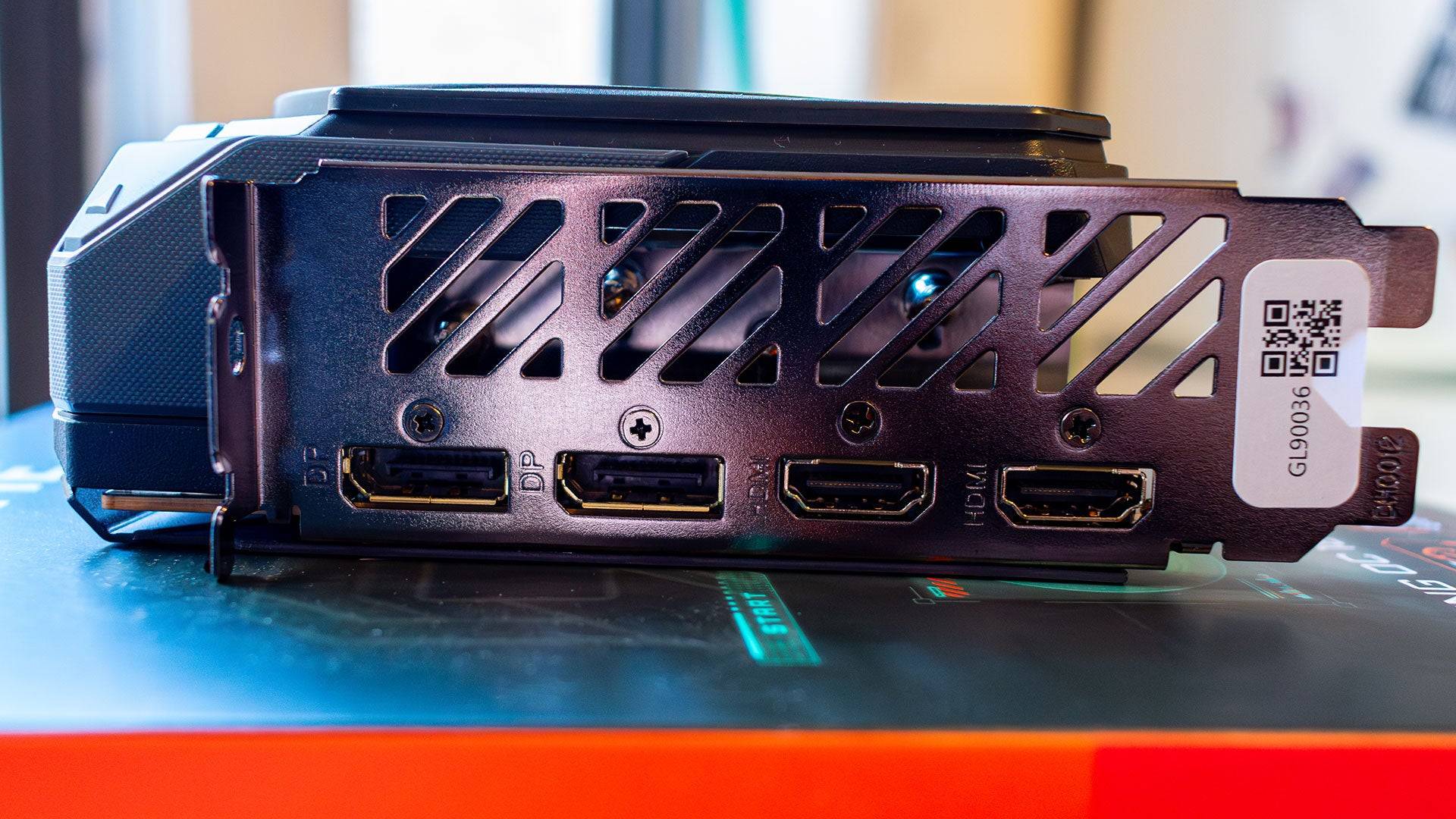
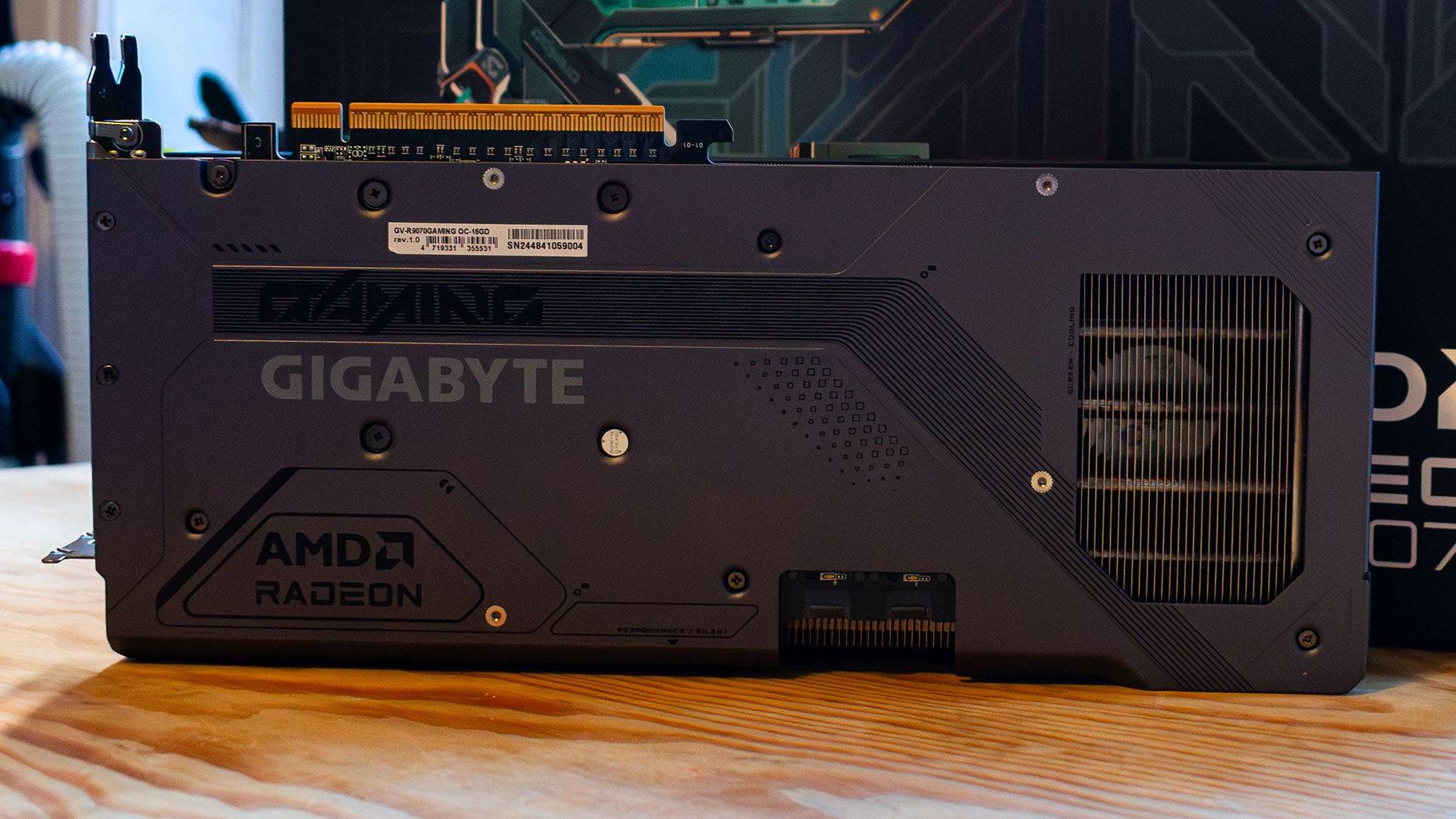

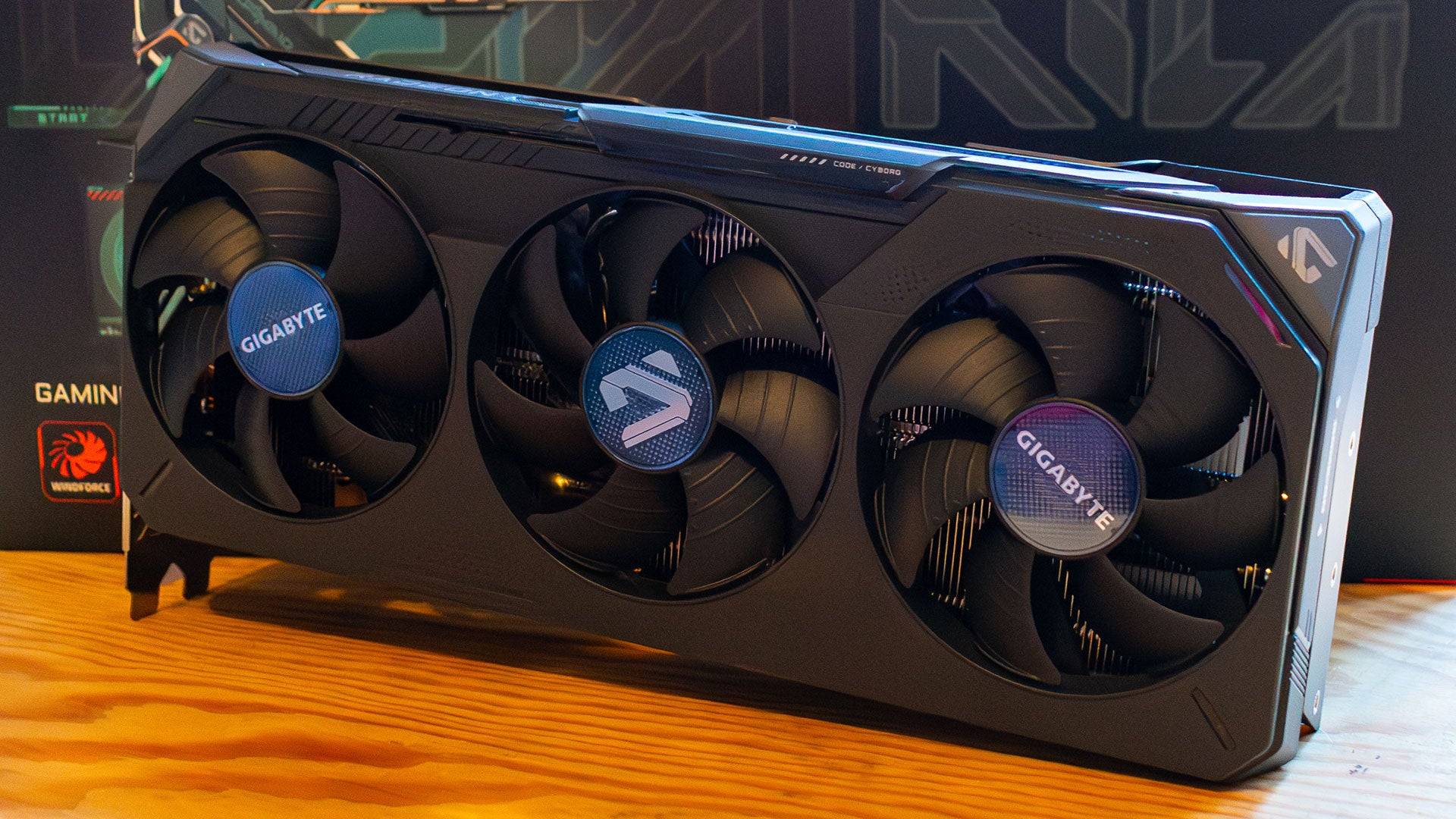
Specs and Features
Like the RX 9070 XT, the RX 9070 utilizes the new RDNA 4 architecture. This results in substantial performance gains, significantly outperforming the previous generation Radeon RX 7900 GRE despite having 30% fewer compute units.
The RX 9070 boasts 56 Compute Units, each with 64 Streaming Multiprocessors (SMs), totaling 3,584 shaders. Each compute unit includes one Ray Accelerator and two AI Accelerators (56 and 112 respectively). These improvements, particularly to ray tracing and AI acceleration, allow the card to compete effectively in ray-traced games. The enhanced AI Accelerators enable FidelityFX Super Resolution (FSR) 4, AMD's first foray into AI upscaling.
Similar to the 9070 XT, it features 16GB of GDDR6 VRAM on a 256-bit bus—a configuration comparable to the 7900 GRE, sufficient for 1440p gaming for years to come. While GDDR7 would have been desirable, it likely would have increased the cost.
AMD recommends a 550W power supply; however, testing revealed peak power consumption of 249W. A 600W PSU is recommended for safety. Importantly, unlike previous generations, AMD isn't releasing a reference design; all RX 9070 cards will be from third-party manufacturers. This review used the Gigabyte Radeon RX 9070 Gaming OC 16G, a triple-slot card with a factory overclock.

FSR 4
Since DLSS's emergence, AI upscaling has become a crucial performance enhancer. FSR 4 finally brings this technology to AMD GPUs. It utilizes previous frames and in-game data with an AI model to upscale lower-resolution images to the native resolution. This differs from FSR 3's temporal upscaling, which lacked the AI detail refinement, leading to artifacts.
The AI processing in FSR 4 introduces a slight performance penalty compared to FSR 3. For example, in *Call of Duty: Black Ops 6* at 1440p (Extreme preset), FSR 3 yielded 165 fps, dropping to 159 fps with FSR 4. The Adrenalin software allows users to choose between FSR 3 (better performance) and FSR 4 (better image quality).
AMD Radeon RX 9070 XT & 9070 – Benchmarks
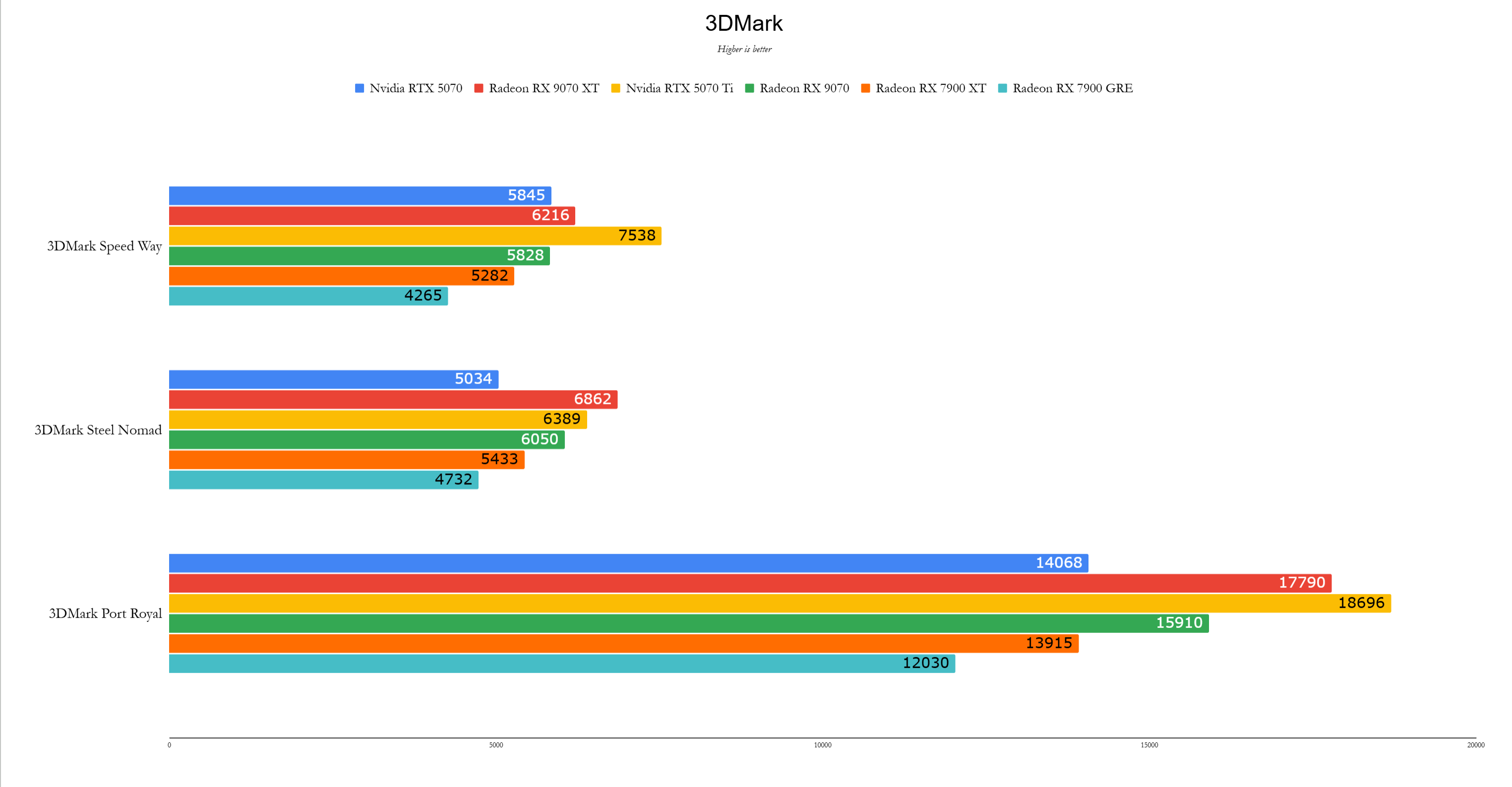
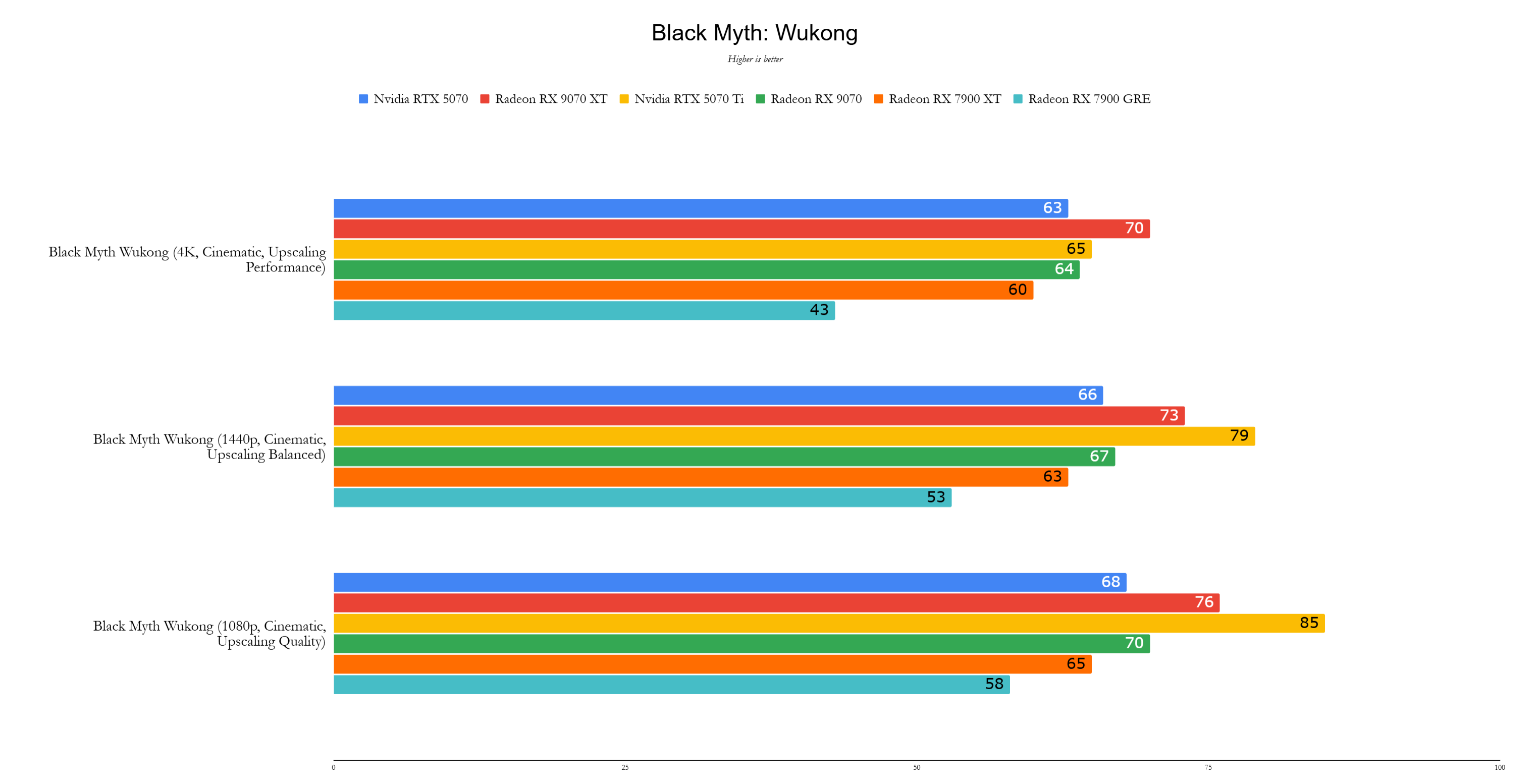
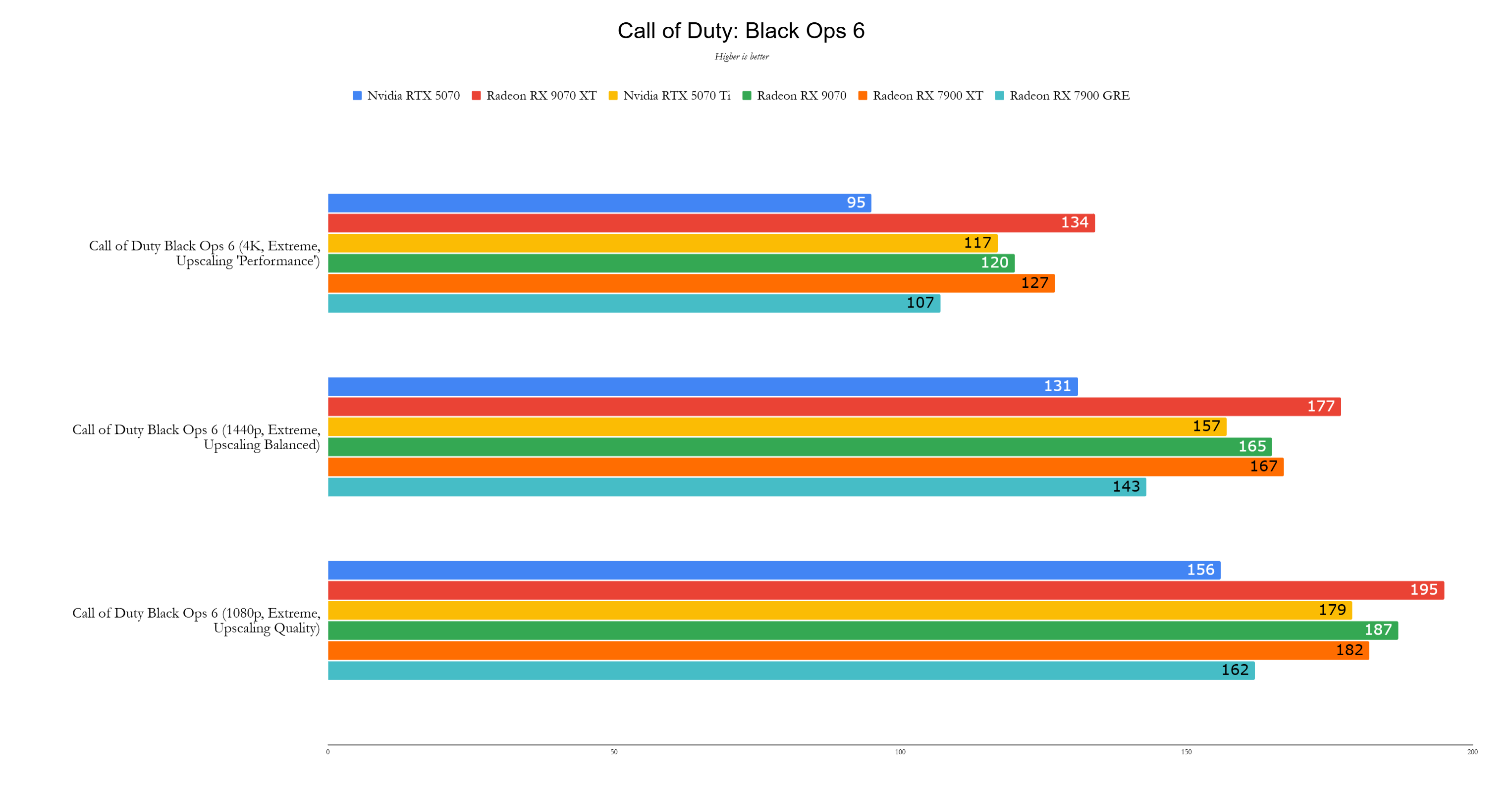
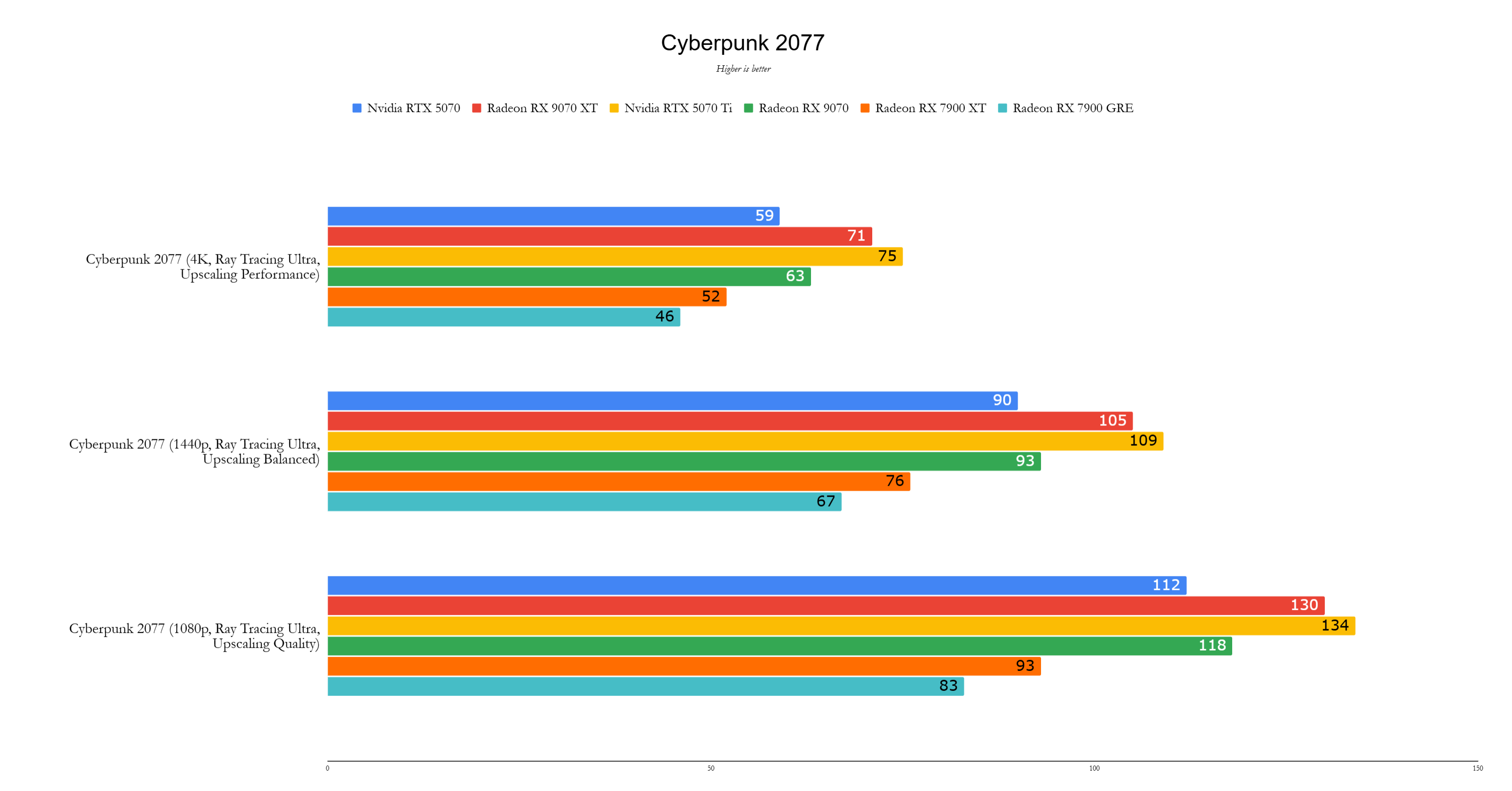
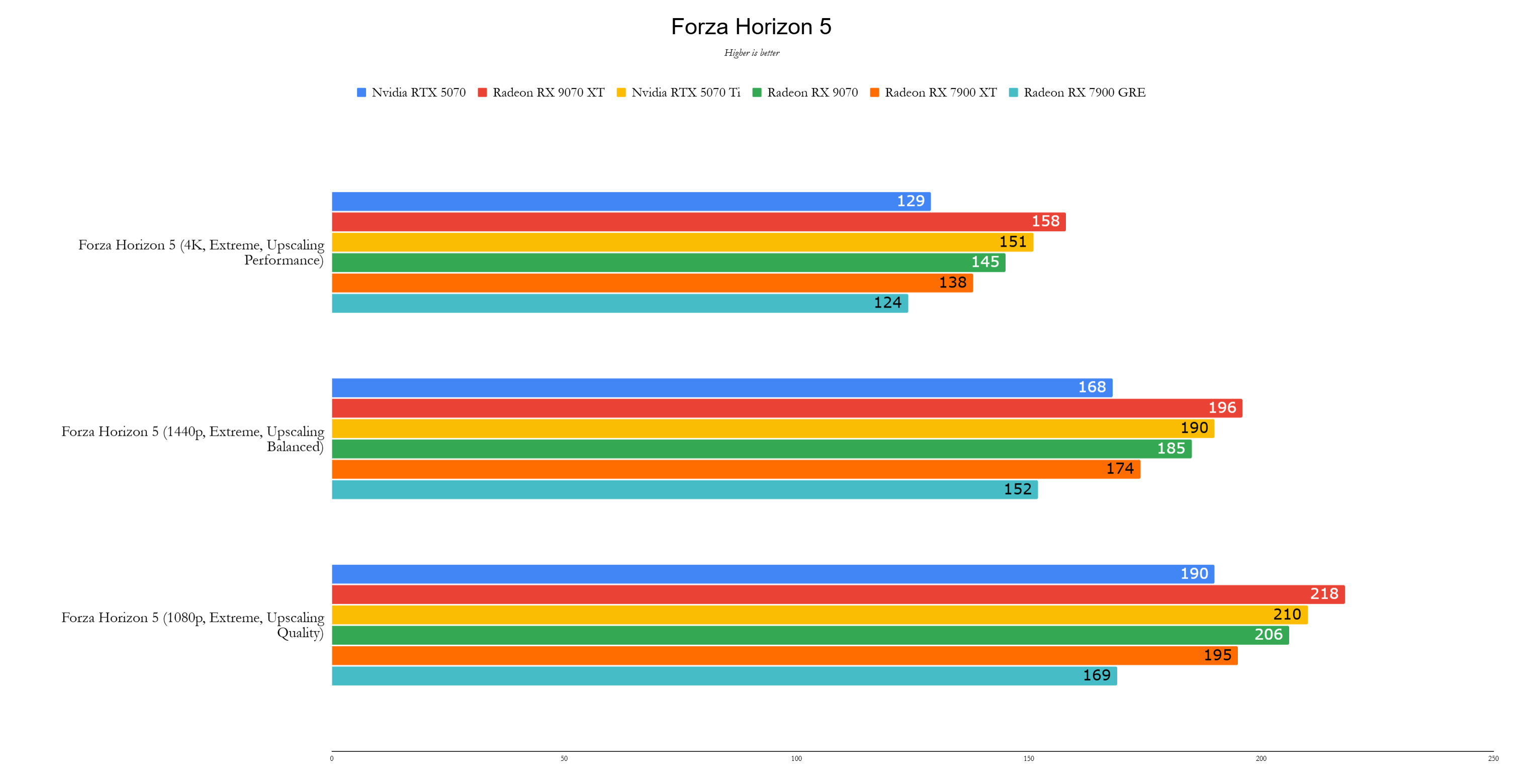
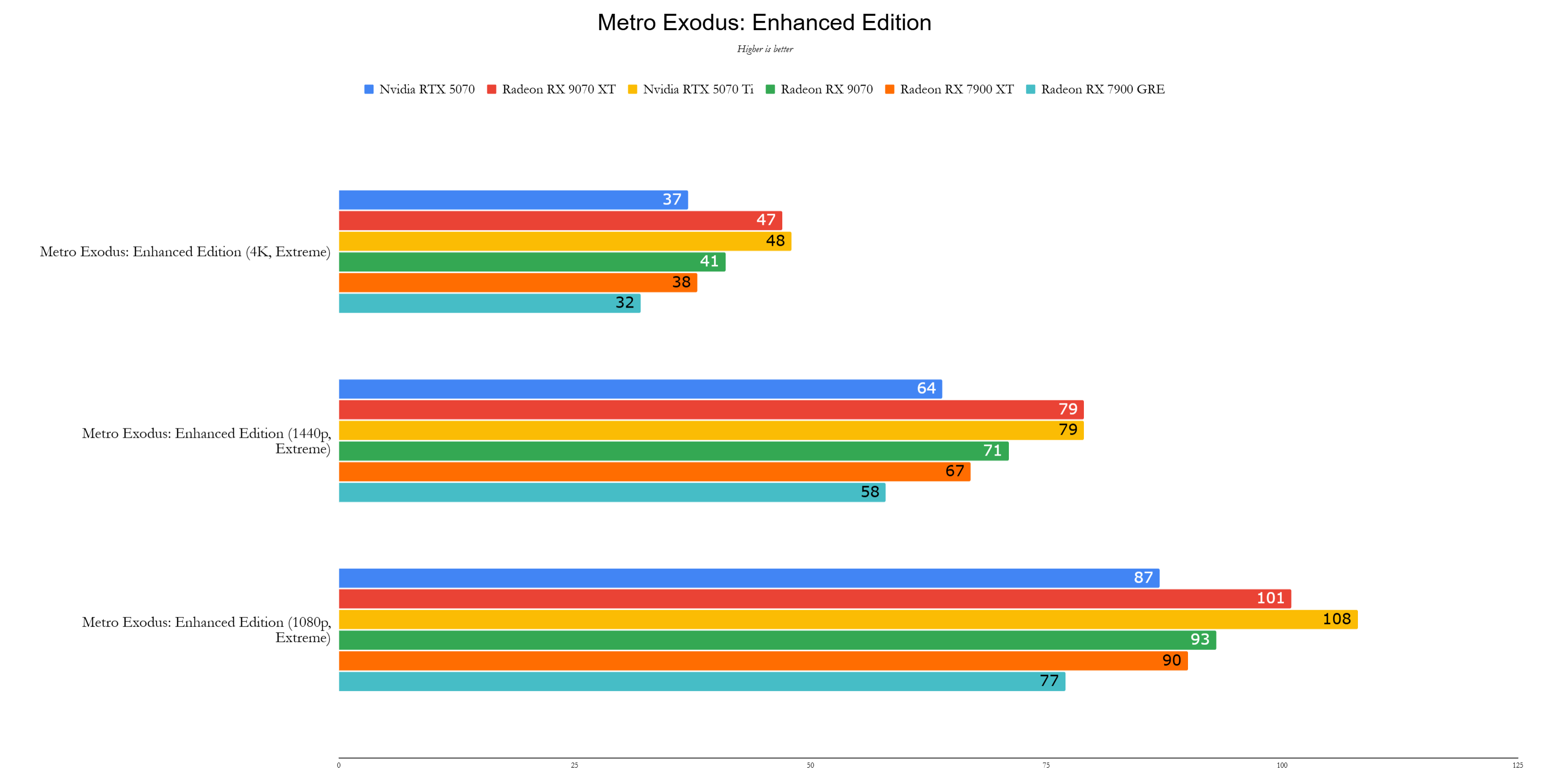
Performance
At $549, the RX 9070 directly competes with the RTX 5070, consistently outperforming it. At 1440p, it's 12% faster on average and 22% faster than the RX 7900 GRE. This is impressive considering its 30% fewer cores. Note that this review used a factory-overclocked version with a reported boost clock of 2700Mhz (approximately a 7% overclock).
Testing used publicly available drivers (Nvidia Game Ready driver 572.60 and AMD Adrenalin 24.12.1, with review drivers for the RX 9070, RX 9070 XT, and RTX 5070). The RX 9070 showed strong performance across various titles, often exceeding the RTX 5070, especially in *Call of Duty: Black Ops 6*, *Cyberpunk 2077*, *Metro Exodus*, and *Red Dead Redemption 2*. *Total War: Warhammer 3* and *Black Myth: Wukong* showed closer results.
The 16GB VRAM provides a future-proofing advantage over the RTX 5070, even if slightly slower in some specific scenarios. The combination of superior performance and larger VRAM makes the RX 9070 a compelling value proposition.
Test System
CPU: AMD Ryzen 7 9800X3D
Motherboard: Asus ROG Crosshair X870E Hero
RAM: 32GB G.Skill Trident Z5 Neo @ 6,000MHz
SSD: 4TB Samsung 990 Pro
CPU Cooler: Asus ROG Ryujin III 360









